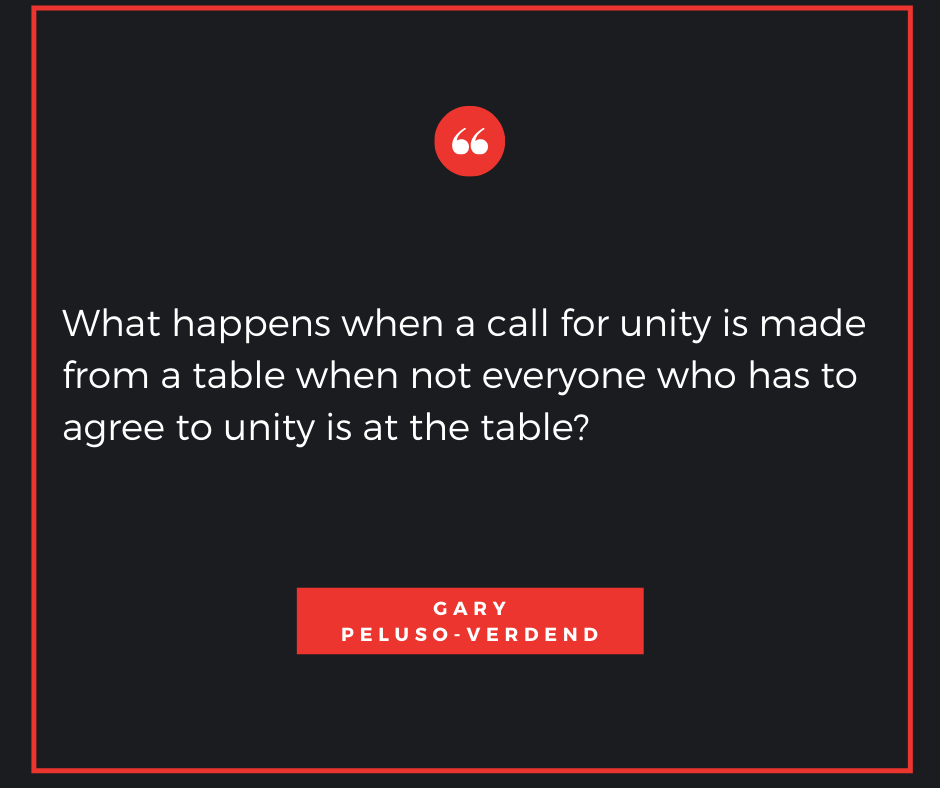Lessons on Unity from the Ecumenical Movement
My dissertation was focused on the modern ecumenical movement, that effort by churches, especially in the 20th century, to overcome centuries of division. The goal was outward and visible unity.
The movement achieved remarkable, history-making results. Catholics and Protestants could pray together and scholars could collaborate. Numerous bi-lateral and multi-lateral agreements green-lit shared ministries and sacramental occasions.
A few denominations merged. Less liturgical traditions reintroduced their adherents to ancient liturgies, and more liturgical traditions expanded to include guitars, folk music, and spirituals. On the local level, leaders from different traditions created shared ministries of mercy and studied the lectionary together.
But, aside from mergers within faith families, the goal of outward and visible unity was and is elusive. And one should expect any call for unity in the U.S., at whatever level, to be at least as difficult to hear and heed.
Here are two examples from the ecumenical movement that offer lessons for this era in U.S. history. One example is about a centripetal force, pulling toward a center. The other example regards how decisions are made and the centrifugal force, pulling away, that one can expect when some stakeholders are not included until the only decision left is to accept or reject.
A centripetal force. Three streams co-mingled to comprise the ecumenical movement: foreign missions, Life and Work, and Faith and Order. In the mission field, the absurdity of exporting European doctrinal arguments to Asia and African slapped a cohort of missionary leaders, along with the realization that they had been agents of colonization. The Life and Work Movement congealed around common social ethics concerns. And Faith and Order dealt with sticky doctrinal differences while search for a genuinely Christ-centered dialogue, rather than playing power games of comparative denominationalism.
These efforts led toward led toward something like the World Council of Churches before World War II. But I’m not sure the WCC would have happened, or would have been birthed when it was (1948), without the pressure created by World War II and—perhaps most importantly—the threat of World War III. The possibility of a nuclear exchange between the USSR and the U.S. terrified battle-devastated Europe. The external threat acted as a centripetal force. That force pushed ecumenical leaders closer and generated a sense of urgency to create a religious, moral, and spiritual counterpart to the United Nations.
The last such moment in U.S. history, for the nation, was 9/11. The centripetal energy of that event is long-since spent. In the midst of a pandemic, when we hear the moral rhetoric of “we are all in this together,” does that sound like an accurate assessment?
A centrifugal force. In the U.S., the Consultation on Church Union was conceived in the early 1960s. The initial inventors were the royalty of several mainline denominations, led by Presbyterian Eugene Carson Blake. He and his collaborators imagined a post-denominational church that not only superseded denominational brands. It also would yoke rural, suburban, and urban congregations into unified, non-geographical parishes.
Methodists, Evangelical United Brethren, Episcopalians, Presbyterians, Congregationalists, Community Churches, and Disciples were invited and accepted to the table early. From 1965 through 1967, three historically Black denominations joined: the African Methodist Episcopal Church, the Christian Methodist Episcopal Church, and the African Methodist Episcopal Church, Zion.
In 1970, a Plan of Union was sent to member churches. The plan was overwhelmingly rejected. There were many reasons for the rejection. One of the bigger reasons, in my opinion, is that the non-geographical parish plan was entirely unworkable. In addition to the obstacles presented by geography, there were the obstacles of race, power, and trust.
 The three Black Methodist denominations had to consider if they would trust becoming a minority cohort within a largely white church. That circumstance, by the way, of being a minority—and an oppressed one—is what led to the formation of those denominations around 1800 and again after the Civil War (for the CMEs). And this plan was submitted in 1970. 1970. Black church leaders were negotiating between the future of the civil rights movement and Black Power. Agreeing to a plan that effectively ended Black control of Black churches was impossible, and Black church leaders said as much.
The three Black Methodist denominations had to consider if they would trust becoming a minority cohort within a largely white church. That circumstance, by the way, of being a minority—and an oppressed one—is what led to the formation of those denominations around 1800 and again after the Civil War (for the CMEs). And this plan was submitted in 1970. 1970. Black church leaders were negotiating between the future of the civil rights movement and Black Power. Agreeing to a plan that effectively ended Black control of Black churches was impossible, and Black church leaders said as much.
The centripetal hopes of a small group of white church leaders were no match for a social fabric torn and fragmented by racism. Trust between leaders was, and is, precious and insufficient. The Plan of Union, largely conceived prior to Black Methodist leaders joining the table, was a centripetal breeze during a national centrifugal derecho created by white supremacy vs. the forces of liberty and justice for Black lives.
What happens when threat is felt between one faction and another, rather than outside the two factions? One should expect hardened boundaries and defensive and offensive strategies developed. No unifying centripetal force to unite divided groups.
What happens when a call for unity is made from a table when not everyone who has to agree to unity is at the table? The answer is obvious.
Where are the centripetal forces today that could power a movement toward unity? What must be done to diminish centrifugal forces and empower centripetal ones? Who is at the table, interpreting what unity means and how unity is expressed?
These questions, derived from the ecumenical movement, should be part of the national conversation.
Dr. Gary Peluso-Verdend is president emeritus at Phillips Theological Seminary and is the executive director of the seminary’s Center for Religion in Public Life. The opinions expressed in this blog are those of the author. Learn more about the Center’s work here and about Gary here.


Comments are closed.